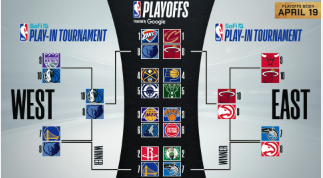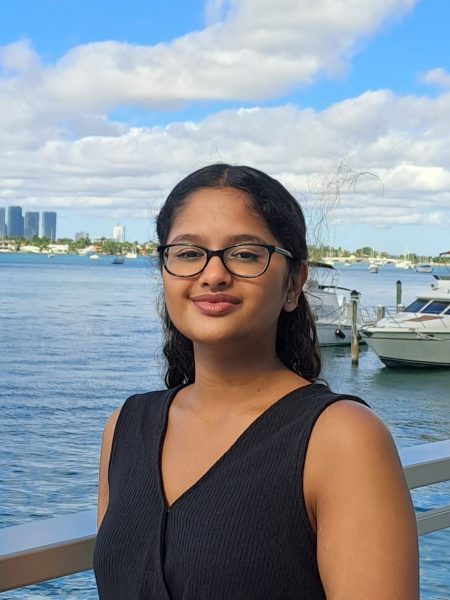Jasmine has always been my favorite Disney princess. She was brown, her clothes kind of looked like my own churidars (or at least if you squinted a little), and her palace looked sort of like the ones I saw in Vijayapura–the Indian city I was born in. But why was this orientalist amalgamation of cultures the only representation little Riya could cling to?
The first time I ever saw anyone of my own culture in a book was in the fifth grade. The white girls in my class had always read about Junie B. Jones, Amelia Bedelia, and Annie from Magic Tree House. They had never wondered why there were no books that represented the lives of all the other children in their class. To be honest, neither had I. It was unfortunately just the norm. Of course, the main character in this story is white. What else did you expect?

So, when I first read Same Sun Here–a book in which a white boy, River, and an immigrant Indian girl, Meena, become pen pals–I finally felt seen. I ecstatically ran to my friends, showing them the page where the Indian girl writes in Hindi. Look I can read this! It’s about the girl’s garden and it’s just like my grandma’s back in India! 10-year-old Riya was elated; she must have read that book about four times a week, each and every time drawing a newfound parallel between her life and that of Meena’s. But why did it take 11 years for me to finally see myself in media?
Indian representation in media is either nonexistent or deeply flawed. Young girls like me never got the chance to see themselves accurately portrayed in the shows that they watched or the books they read. Krishna Jhaveri, an Indian-American teen, believes that “Indians are represented extremely poorly in media, especially in like American TV shows and movies. Instead of portraying our true culture and customs, the media contributes to the stereotypes that falsely characterize us.”
According to the Migration Policy Institute, the Indian diaspora population in the United States is 4.4 million. That means there are 4.4 million different identities and personalities and lives of Indian people, yet the best representation we seem to get are racist caricatures and harmful stereotypes. In addition, a Nielsen report found that South Asians only receive a .5% share of the screen time in broadcast television, 1.1% in cable television, and 1.5% in subscription videos on demand.
Flawed representation of cultures and ethnicities is not just damaging to the people who identify with that culture; it also leads to the development of culturally ignorant mindsets amongst others. With a rare few stereotypical Indian characters found in media, people of other cultures begin to form generalizations about the entire population. Young children in elementary schools naively tell me that I look like Devi from “Never Have I Ever”–simply because that’s the only Indian person they’ve ever seen on TV. The bigger problem arises when my freshman classmate chooses to ask me where my boyfriend Raj is, in reference to the nerdy Indian man from “The Big Bang Theory.” What a funny joke, right? On top of that, practically every non-Indian person who sees me in my favorite Indian ghagras calls me Princess Jasmine. Not only is she not Indian, but she’s also an exoticized, orientalist mixture of cultures created by Disney to group all those other people together. It’s frustrating when your identity gets lumped in with any other brown person because aren’t they all the same thing anyway?

It is important to note the incremental improvements in media representation. For instance, “according to U.S News, with popular streaming services such as Netflix and Disney+ having released popular South Asian shows, Desi people in the country reported feeling more included” (Chantilly News). Variety also reported that “Never Have I Ever,” a show centered around an Indian teen, has been “viewed by 40 million households.” The biggest ray of hope comes from shows like “Bridgerton” which accurately portray Indian culture and, as Jhaveri put it, include “accurate representation of clothing and accents, which are usually where most of the media misrepresent us.”
The question, however, is whether these new shows are educating these 40 million households about the beauty of Indian culture or whether they are perpetuating stereotypes. Personally, I could not get past episode two of “Never Have I Ever,” primarily due to the dismissive comments about certain customs. Jhaveri agreed, noting that the show “exaggerates Indian customs and incorporates stereotypes that are simply untrue.” She believes that “Indians have definitely received more attention in media but [representation] hasn’t necessarily improved.”
As I have grown older, I see more and more examples of good representation. In the sixth grade, my English Language Arts teacher, Ms. Lopez, had a library dedicated to showcasing diverse books. I will always treasure how much care she took into picking out books that highlighted people like me, books about Bharatanatyam dancers, books that made me feel seen. Being starved for representation for so many years means that I hold every “Bridgerton,” every “Polite Society,” every American Betiya even closer to my heart.
Now, when I walk into the children’s section of Danbury Public Library and see an entire display dedicated to books about deaf boys, families celebrating Eid, and, yes, even Indian girls, a bit of hope sparks inside of me. Maybe that little Desi girl sitting at the library table, burning through a chapter book, won’t love Jasmine because she’s the only brown princess. Maybe that girl will experience the joy of representation just a bit earlier than I did.
























Sunil Nair • Feb 8, 2024 at 8:32 am
The finding is a fact , the history of India cultural nuances get attention but not at a scale where western culture,books,poetries,movies gets attention in India and that is because in many countries ppl are still in awe about western countries. Btw even other cultures are great but they too admire western. Reason is in the way their assets are showcased or marketed, times have started changing. Brilliant article, superlative usage of jargons and sentences to portray subject, kudos Riya
Kiran V • Feb 7, 2024 at 5:08 pm
Great article, sparks important conversations about diversity and inclusion in media representation. Also, the data and statistics you used were very effective in supporting your argument. Thank you for doing the research!”
Krishna Jhaveri • Jan 31, 2024 at 3:10 pm
Great Job Riya!! I loved your writing. Thank you for shedding light on this topic!!
Chloe Bakalar • Jan 31, 2024 at 9:59 am
Good job Riya! You have such a fresh perspective on the issues in media!
Manuela • Jan 31, 2024 at 9:54 am
Great writing, Riya!